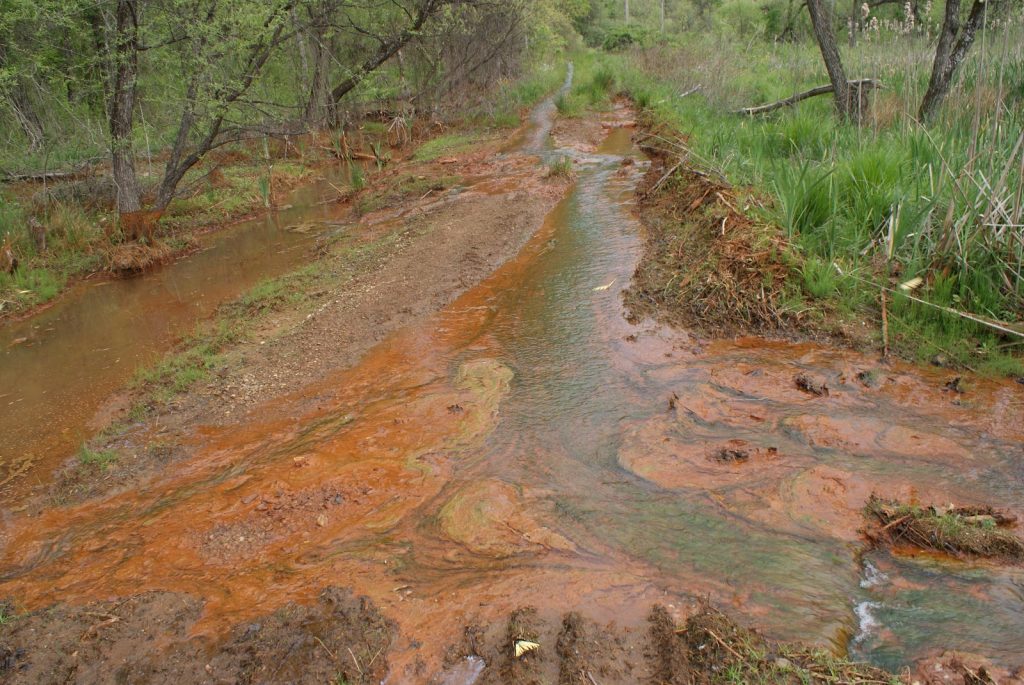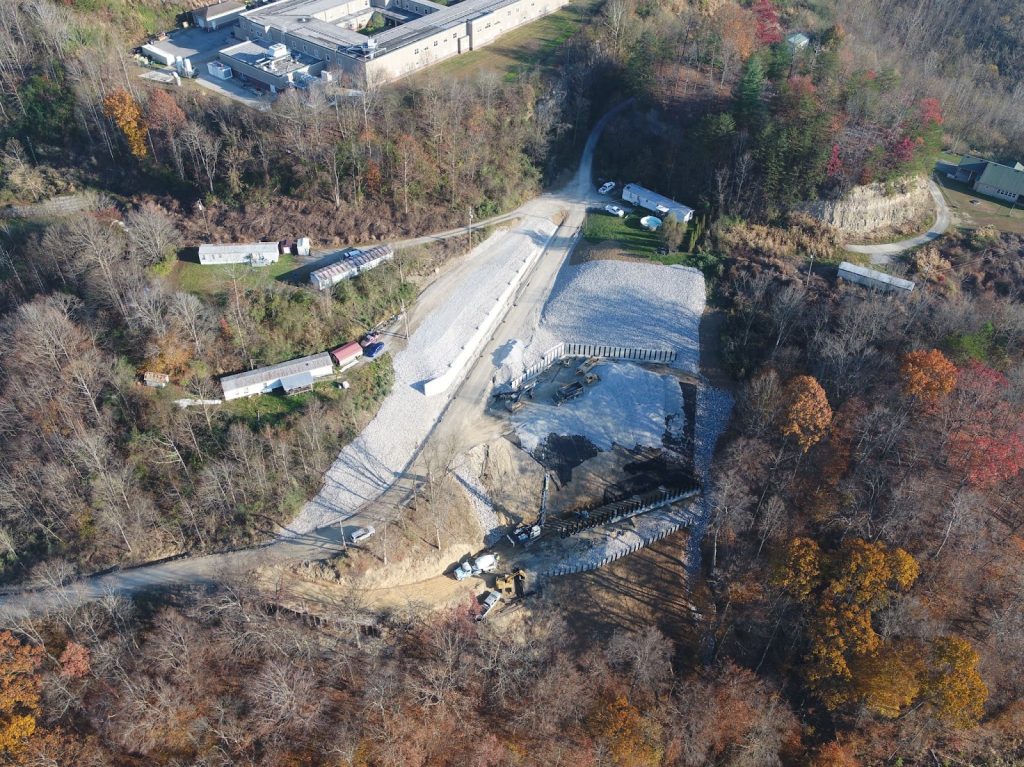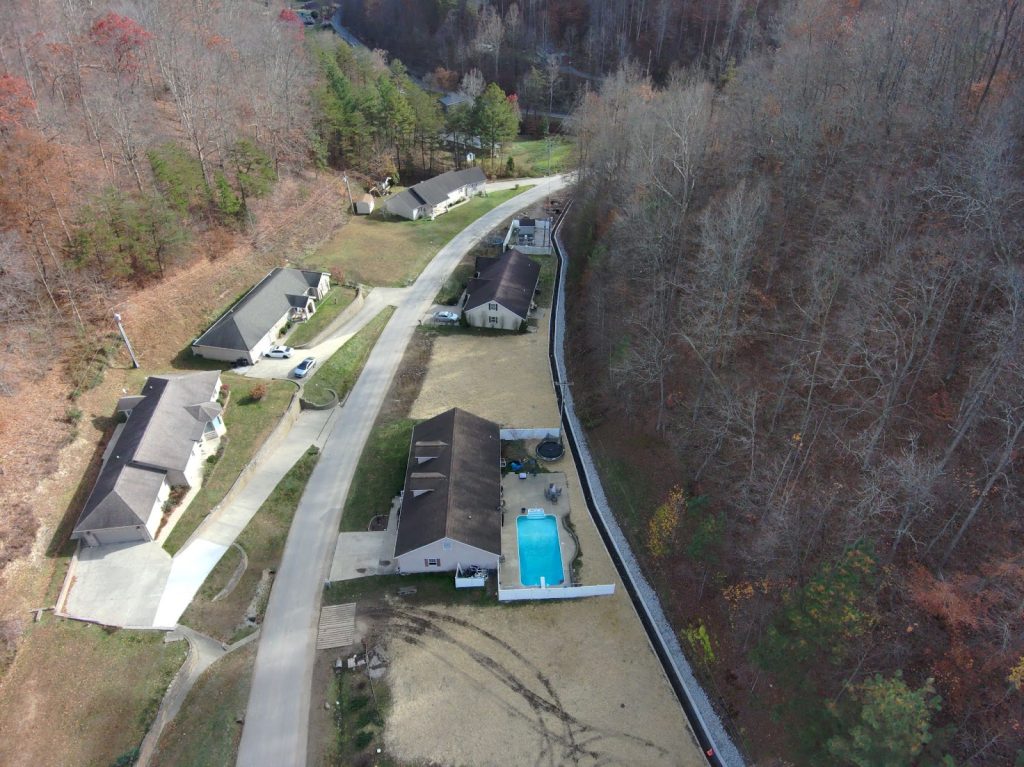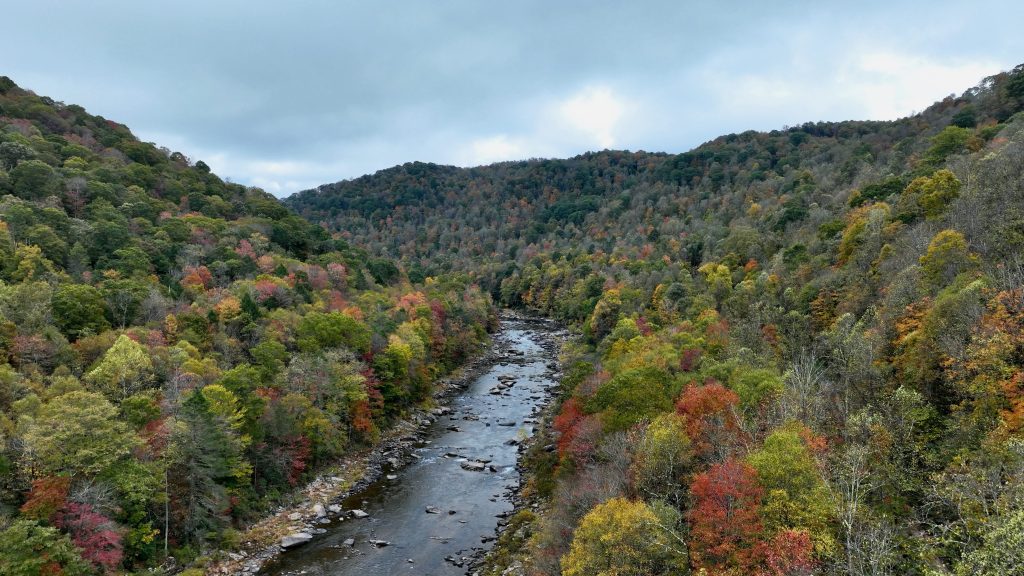Massive Funding Boost Spurs Coal Clean-up Efforts in Appalachia

Plans are underway to give Kentucky residents whose water supplies have been adversely affected by historic coal mining practices access to clean, piped water through the Kentucky Division of Abandoned Mine Lands’ Water Supply Replacement Program. The project is one of many across the Appalachian region made possible by an injection of $725 million in funding into cleanup of decades-old abandoned coal mines.
Announced earlier this summer, this $725 million is the third allotment from $11.2 billion in funding for reclaiming abandoned mine land provided by the 2021 Bipartisan Infrastructure Law. These dollars help state agencies clean up hazards and contamination left behind decades ago by coal companies, and create local jobs and economic opportunities in the process.
Appalachian states receiving the funding include Alabama, $20.4 million; Kentucky, $74.2 million; Ohio, $46.4 million; Pennsylvania, $245 million; Tennessee, $8.5 million; Virginia, $23 million; and West Virginia, $140.6 million.
The funding is in addition to annually allocated money from the federal Office of Surface Mine Reclamation and Enforcement’s Abandoned Mine Land program, which is funded by a fee on current coal production and was reauthorized in 2021.
Appalachian Voices, the organization that publishes The Appalachian Voice, played a key role in the legislative push that led to the inclusion of abandoned mine lands funding in the infrastructure bill.
“I am excited to see all this AML money coming down,” says Matt Hepler, an environmental scientist with Appalachian Voices. “It is quite an accomplishment of ours … Now states like Pennsylvania and West Virginia are getting far more AML clean up money then they would have otherwise.”
Addressing coal’s legacy pollution
From the time coal mining began in Appalachia in the 1700s until the passage of the 1977 Surface Mine Control and Reclamation Act, coal companies were not legally required to clean up their mines, resulting in thousands of dangerous, open mine shafts and other hazards.
Since 1977, the Abandoned Mine Land Program has closed more than 47,000 abandoned underground mine shafts and openings, and eliminated more than 1,050 miles of dangerous highwalls, according to the Department of the Interior. It has also eliminated more than 131,000 acres of dangerous spoils and embankments, restored more than 700,000 acres of streams and land, and replaced infrastructure for more than 58,000 polluted water supplies as of November 2023.

Types of projects include removing mining waste piles known as gob piles, correcting road drainage and mitigating areas at risk for landslides and areas at risk of sudden drops in the level of the ground known as mine subsidence. The list also includes removing unstable cliffs caused by blasting known as highwalls, managing underground explosions and fires, closing mine shafts and remediating acid mine damage and contamination in waterways.
Addressing these problems “supports jobs in coal communities by investing in projects that close dangerous mine shafts, reclaim unstable slopes, improve water quality by treating acid mine drainage, and restore water supplies damaged by mining,” according to a press release from the U.S. Department of Interior.
“AML projects also support economic revitalization by reclaiming hazardous land for recreational facilities and other redevelopment uses, including manufacturing and renewable energy projects,” the press release continues.
States have also used abandoned mine cleanup funds to protect homes and infrastructure from mining subsidence. The law provides funding for AML projects through 2034, which the agency expects will enable reclamation of the majority of currently inventoried abandoned mine lands.
AML funding at work around the region

Kentucky
Kentucky’s Energy and Environment Cabinet received just over $74.2 million to address legacy coal mining pollution and hazards.
“With this increased funding, Team Kentucky has been able to address historic mining challenges at a level never possible before,” says Robin Hartman with the office of communications for the Kentucky Energy and Environment Cabinet. “The Division of Abandoned Mine Lands has been able to develop community projects that affect large numbers of citizens in the eastern and western Kentucky coalfields.”
As of August, 15 counties in Kentucky had benefited from Bipartisan Infrastructure Law funding. Sixteen projects have been completed, 27 are active and 15 are awaiting authorization. Additionally, 80 projects are in various stages of development.
Some of the larger active projects include, according to Hartman, the Nascar Lane project in Perry County to restore a hillside after a landslide threatened a home and blocked access to the road, and a project in Johnson County to protect a 12-home subdivision by building concrete ditches, culverts and drop boxes to control drainage. A nearly completed project in Letcher County involves building retaining walls to stabilize the hillside above Fleming-Neon City Park and ensure safe access to a nearby street.
“[Bipartisan Infrastructure Law] funding has also been used for the Water Supply Replacement Program, which focuses on protecting, repairing, replacing, constructing or enhancing water supply facilities, including water distribution facilities and treatment plants, that have been adversely affected by historic coal mining practices,” says Hartman. “Four of those projects are active, four in design and five are further out in development.”
Those projects include a waterline replacement in the city of Hazard that will serve 150 homes, updating and repairing waterline infrastructure that serves 2,500 residents, and repairing damaged water and wastewater lines that serve 961 homes.

Pennsylvania
Pennsylvania, the state with the most abandoned mine lands in the United States, received $244 million this year for cleanup projects.
“Some of the projects have already been selected, including abandoned mine discharge projects in western Pennsylvania and a grant to design a reclamation project that will mitigate mine subsidence in an area with historic subsidence issues,” says Neil Shader, press secretary for the Pennsylvania Department of Environmental Protection.
An ongoing mine subsidence project in Bovard, Pennsylvania, aims to prevent future damage to homes, businesses and local baseball fields.
The impact of the funding is hard to understate, explains Shader, pointing out that it allows for long-term solutions for waterways damaged by mining and reclamation of abandoned mine lands to promote new economic development.
The Pennsylvania Department of Environmental Protection also oversees the Mine Subsidence Insurance program for eligible homeowners. Homeowners insurance doesn’t usually cover damage caused by mine subsidence. The insurance program, which is not funded through the Bipartisan Infrastructure Law, has paid out over $36 million in homeowner claims since 1961.
Virginia
The Virginia Department of Energy received nearly $23 million for reclaiming abandoned mine lands from the Bipartisan Infrastructure Law funding in 2024. Virginia has approximately 7,000 known abandoned mine land sites.
“Since 2017, Virginia Energy’s traditional AML program continues to establish and support job growth by creating approximately 1,000 jobs within our communities and expects to create an average of 100 jobs every five years” says Tarah Kesterson, public relations manager for the Virginia Department of Energy. “The AML program typically receives around $3 million annually. Based on that funding, these additional dollars are projected to create more than 1,000 jobs.”
“These funds will allow us to reclaim just over 70% of the current inventory Virginia Energy has gathered since our AML program began in 1981,” Virginia Energy Abandoned Mine Land Director Lesa Baker said in the U.S. Department of Interior release.
The Virginia Department of Energy has broken ground on many projects funded with the $2.5 million received through the Bipartisan Infrastructure Law already, and has several more in the planning phases. Additional projects include the Camp Creek landslide project in Dickenson County.

“The dangerous slide was caused by surface coal mining that happened sometime between 1973 and 1976,” says Kesterson. “The reclamation plan includes relocating public water lines, gaining access to the landslide, which is located on the Pound River, removing the material and installing a buttress to stabilize the slope and prevent any more material from entering the river. If the landslide material is not removed, it will cause the river to flood the community.”
About $1.6 million from the state’s Bipartisan Infrastructure Law funding is supporting 15 jobs at the project site, according to a report in the Virginia Mercury. Dirt from the site will be used at another nearby AML project to replace a bridge.
Bipartisan Infrastructure Law allocations from 2022 have funded 18 projects in various stages of development or construction. One, the closure of two open mine portals on Allegheny Road, has been completed at a cost of $1.8 million.
Allocations from 2023 are funding five projects in development with more in the planning phase.
West Virginia
West Virginia’s 2024 allocation, the second-highest after Pennsylvania, came to just over $140.6 million.
“This funding will allow the [West Virginia Department of Environmental Protection] to address more large-scale projects, such as mine fires, subsidence issues, and watershed/stream restorations, as well as take a more holistic approach to AML sites by remediating most, if not all of a site’s hazards, instead of one or two at a time,” wrote Terry Fletcher, chief communications officer for the agency, in an email.
WVDEP had awarded 14 bids for AML projects for 2024 as of August, including portal closures, landslide and highwall remediation, and drainage repair. Two AML-funded projects — the closure of mine portals in Marion County, and the clean-up and rehabilitation of a mining refuse site located in Tucker and Preston counties — were out for bidding.
Projects completed with AML funding in 2023 include the closure of open mine portals on Hurricane Branch near Bradford, stabilization of a dangerous slide area in Whetsell, the removal of a mining refuse pile in Clear Fork and management of a mine fire in White Hall.
A complete list of AML funded reclamation projects completed since 2017 can be found on the West Virginia Department of Environmental Protection website.
“The WVDEP’s AML program was established in 1981 and has spent hundreds of millions of dollars to address AML issues around the state,” he added. “Without the AML program, it is unlikely that these areas would have ever been remediated or restored.”
Map showing AML lands: https://appvoices.org/wp-content/uploads/2021/03/AML-2-map-redline2.jpg


Related Articles
Latest News

Leave a comment
Your email address will not be published. Required fields are marked *





Leave a Comment